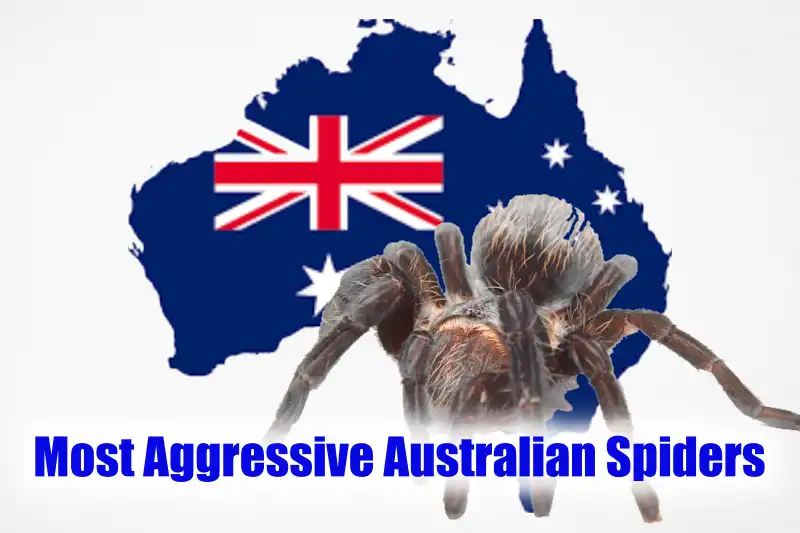Spiders are one of the most feared creatures in the world. The name itself generates fear inside most of us. From building crevices to forests, they have a wide area of distribution.
Australia harbors one of the most dangerous spiders. Today we will discuss about such 15 types of Spiders. Let’s begin exploring!
Top 15 Most Aggressive Australian Spiders
15) *St.Andrew’s Cross Spider
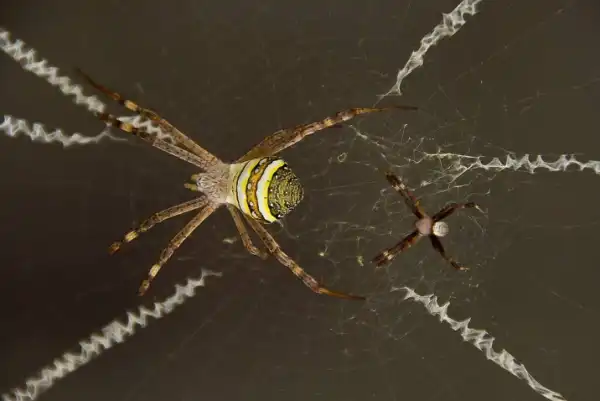
| Scientific Name | Argiope keyserlingi |
| Size | Males are extremely small, 3 mm to 4 mm.
Females are large, between 10 mm to 16 mm. |
| Location | Queensland, New South Wales. |
These spiders weave a unique “Cross” pattern in their web. Some Researchers suggest that these patterns are used to intimidate or warn potential predators, while some suggest these help in capturing prey by reflecting ultraviolet light.
These patterns are also called “stabilimentum” since they are thought to stabilize the overall web structure.
Their venom is non-toxic to humans and they are generally very less aggressive and will hardly bite. They have a colorful abdomen, often with yellow-white colored bands.
14) Daddy-Long-Legs
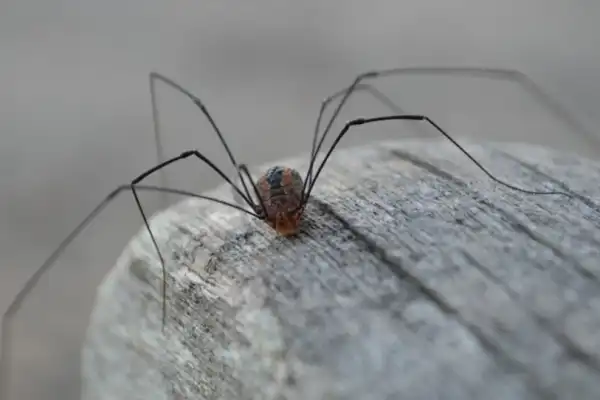
| Scientific Name | Pholcus phalangioides |
| Size | 0.9 cm. |
| Location | Throughout many places in Australia |
Spiders with long legs are the worst nightmare for people. But in reality, these small arachnids are not very harmful to humans, apart from a stinging bite.
Mostly they are found in human households, but since they attack other spiders such as Redbacks, people try not to bat an eye at them. They also go by the name of “Cellar Spider”.
13) *Golden Huntsman Spider

| Scientific Name | Beregama aurea |
| Size | The body is 1.8 cm, with long legs up to 15 cm. |
| Location | Found Queensland and parts of New South Wales |
These spiders are not typically very aggressive but may bite if provoked. Since their body is flat, they can squeeze into crevices, indoors, and cars. People get terrified when they see these spiders jumping around inside the car or suddenly coming out of the sun visors, which causes numerous accidents. They are also known as “Crab Spiders”.
They have a golden-yellow coloration and large body size, which makes them appear intimidating, although they generally avoid human conflict.
12) *Green-Bellied Huntsman
| Scientific Name | Typostola barbata |
| Size | Body length up to 19 mm to a maximum of 40 mm. |
| Location | New South Wales, Queensland, and Victoria. |
Their bites can be painful, although not very harmful. They have yellow eye-shadow in the front. Black dots are present in their abdomen and multiple patches of hairs are present between legs.
They get their name due to the green coloration on the underside of the abdomen.
11) *Queensland Whistling Tarantula
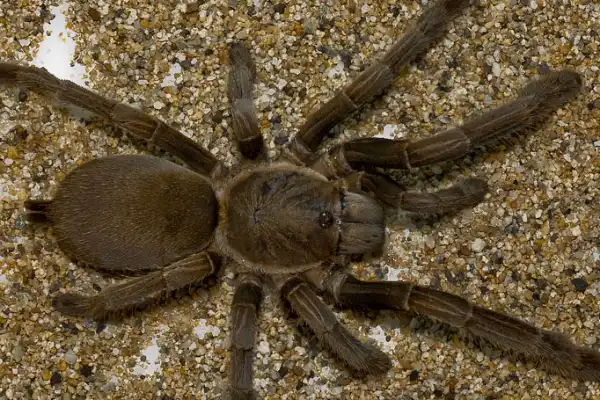
| Scientific Name | Selenocosmia crassipes |
| Size | Between 6 cm to 9 cm. |
| Location | Queensland, Parts of South-Western Australia. |
Although these spiders are often called “Bird eaters”, tarantulas rarely eat any bird and usually feed on small insects, frogs, and lizards.
When these spiders feel threatened, they make a Whistling noise by rubbing their front legs against their jaws to scare off predators.
Although they don’t bite, too much provoking might change their mood. Their bite is painful and causes nausea, and vomiting in humans. But their venom can kill other small animals in just 30 minutes!
10) *Cupboard Spider
| Scientific Name | Steatoda grossa |
| Size | Between 1 cm to 1.2 cm. |
| Location | Queensland, Parts of South-Western Australia. |
The body color of these spiders ranges from dark brown to black. The abdomen is small pea-shaped and the females have white crescent markings on top. They are often mistaken with the redback spiders since they look almost similar but lack the characteristic red stripe of the redbacks.
They reside indoors and in gardens, inside empty pot plants. Although they tend to escape, few recent cases of Cupboard spider bites have been reported.
9) *Sydney Brown Trapdoor Spider
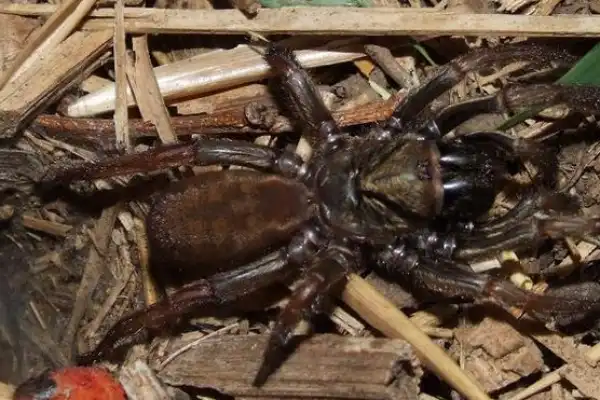
| Scientific Name | Arbanitis villosus |
| Size | 1.5 cm to 3 cm. |
| Location | Primarily found in Sydney. |
These spiders have a dark-brown body with black fangs. They live inside burrows in the ground of bushlands, gardens, and lawns. These burrows are lined with spider silk in the open ground. Although the term “Trapdoor” is assigned, not all of them have a trapdoor and have open burrows instead.
The male members of this species tend to be aggressive when threatened. They are often confused with the species of Funnel-web spiders because of the similar bite symptoms.
8)*Black House Spiders
| Scientific Name | Badumna insignis |
| Size | Generally between 1 cm to 1.5 cm. |
| Location | Parts of Southern and Eastern Australia. |
They have a dark-greyish body with brown banded legs. These territorial spiders build a very messy, funnel-shaped web, not unlike the well-developed web structures of other spiders.
Since they are found inside houses under cracks, doors, and windows, people often encounter them surprisingly.
These spiders are poisonous and multiple bites may cause extreme pain and swelling, dizziness, and vomiting.
7) *Garden Wolf-Spider
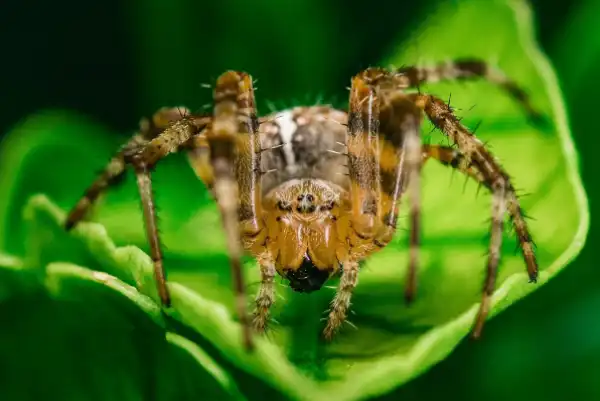
| Scientific Name | Tasmanicosa godeffroyi |
| Size | Between 1.5 cm to 2.2 cm. |
| Location | Southern Australia |
These spiders get their famous name due to the method of hunting their prey, as they chase and pounce their prey, almost like a wolf. They are very fast and agile spiders.
The females carry the eggs on their backs, weaving them in a cocoon of webs. After the eggs hatch the baby spiders ride with their mother for some time until they become big enough.
6) *White-Tailed Spider
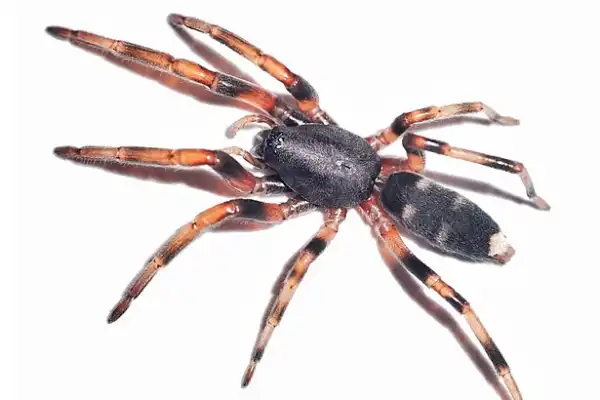
| Scientific Name | Lampona cylindrata & Lampona murina |
| Size | 1.8 cm on average. |
| Location | L.cylindrata is mainly found in Southern Australia, while L.murina is found in Eastern Australia. |
These spiders have a unique Cigar shaped body, with grey color. The legs are dark red to yellowish.
Can you guess where this little arachnid prefers to hide? Out of all the things in the world, they have a special fondness to hide under folds of cloths.
Their bite can cause local swelling, itchiness, and headache.
5) *Red Headed-Mouse Spider
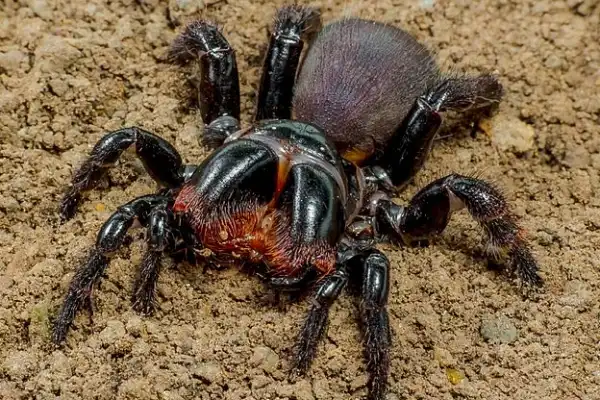
| Scientific Name | Missulena occatoria |
| Size | Between 0.6 inch to 1.37 inches. |
| Location | Throughout Australia. |
These spiders have a black to dark-bluish body with a bright red head and fangs. The males wander for a female spider to mate, whereas females hardly leave their burrows.
Their name also signifies their food habit, such as preying on small rodents. Their burrow also looks similar to a mouse den. These spiders are some of the most venomous spiders in Australia, and people often mistake it for a funnel-web spider.
4) *Common Garden Orb Weaver
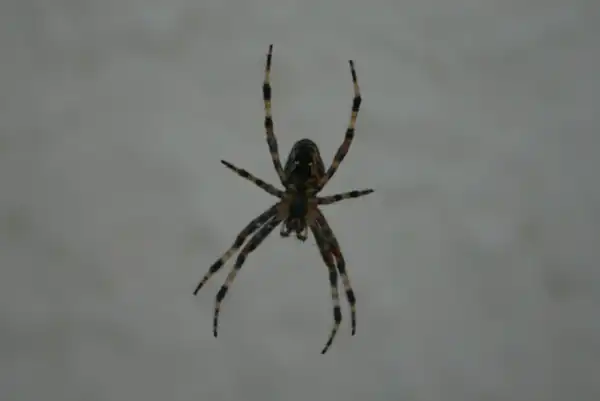
| Scientific Name | Eriophora bipatica & Eriophora transmarina |
| Size | Males are 1.5 to 2 cm whereas females are up to 3 cm. |
| Location | Eastern and Southern Australia |
These small spiders are found mainly weaving webs between shrubs and trees in gardens, and clothes hanging from washing lines, due to which many people unintentionally encounter them. The spiders are known to have a high number of reported bites each year in Australia.
They are mainly nocturnal and rest during the day, withdrawing their legs under the body and hanging from a thread of web.
3) *Red-Back Spider
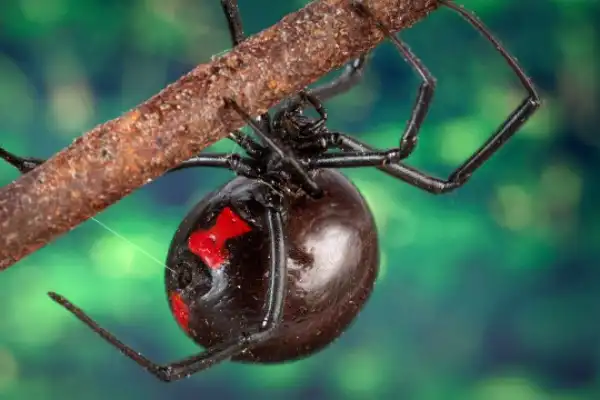
| Scientific Name | Latrodectus hasselti |
| Size | Males up to 5mm, whereas females grow up to 15 mm. |
| Location | Throughout Australia. |
You are probably wondering why these spiders look very similar to the Black Widow spiders, this is because the Redbacks and black widow spiders are under the same genus. They have a bright red stripe on their abdomen, from which they get their name.
Did you know among the two spiders whose venom could kill a human being, these spiders are one of them? Thankfully we have anti-venom for treatment and reports of death due to spider bite have so far been nil. The females are usually aggressive and eat their male counterparts after mating.
2) *Northern Tree-Dwelling Funnel-Web Spider
| Scientific Name | Hadronyche formidabilis |
| Size | They are the largest of all funnel web spiders, usually between 4 to 5 cm |
| Location | Primarily found in Southern Queensland and Northern parts of New South Wales. |
These are the cousins of the Sydney Funnel-web spiders and almost equally venomous as them. Unlike other members of the funnel web spiders, these typically prefer to live inside tree hollows and cavities. Most of the cases of bites are frequently found from November to March since the spiders are active during this time.
Strong fangs, Venomous nature, aggressive nature, and larger size have granted them the name “Formidabilis”. They also go by the name Northern River funnel web spider.
1) *Sydney Funnel-Web Spider
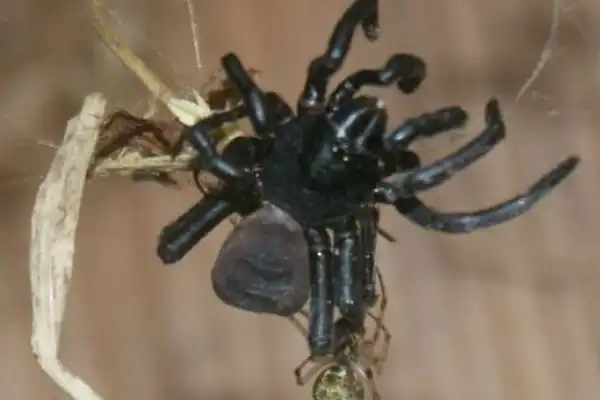
| Scientific Name | Atrax robustus |
| Size | Ranges between 1 cm to 5 cm. |
| Location | Predominant in Sydney. |
These dark-brown spiders are the deadliest spiders in Australia and the most dangerous among all funnel web spiders. Their strong venom can kill any human, which has been now prevented with the discovery of an anti-venom.
They are quite aggressive, and instead of running the other way, might not waste a chance to bite their target! To appear larger and more intimidating, they raise their front legs as well as fangs- definitely a terrifying sight to see!
They usually reside around human households and bushes, and sometimes they fall into the swimming pool. Their venom has a potent neurotoxin in its composition.
Conclusion
Generally, spiders mostly try to avoid any human contact and only bite if they are excessively provoked or not properly handled, for example, people who keep them as pets often get bitten due to mishandling.
Their venom is not as potent as snake bites or bee sting but it is advised to seek immediate medical attention if you get bitten. Aggressiveness also differs between species depending on how threatened the spiders are.
Also Read:
Hi everyone. I am Sagnik. Biology has always fascinated me since my school days and that interest motivated me to pursue a Bachelor’s degree in Zoology and a Master’s degree in Biotechnology. I learned a lot of new interesting facts and information regarding the biological world we are part of. After obtaining my degree, I started working as a biology teacher through which I am able to teach students the various concepts that I have learned. Apart from my love for this subject, my passion lies in music, and I teach guitar as well. Photography, Reading comics, Drawing, and video editing are some of my other hobbies. I welcome you to a journey with me, where I will share my knowledge and excitement for the living world through my writings with you all.
